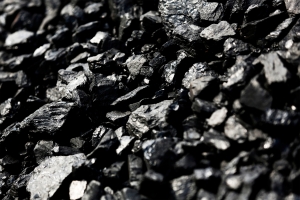


(Posted on 22/12/20)
A global economic recovery in 2021 is expected to drive a short-lived rebound in coal demand following the major drop this year triggered by the Covid-19 crisis, according to a new report from the International Energy Agency.
However, there is little sign that the world’s coal consumption is set to decline substantially in the coming years, with rising demand in some Asian economies offsetting declines elsewhere. As coal is by far the single largest source of global energy-related carbon emissions, the trends outlined in the report pose a major challenge to efforts to put those emissions on a path compatible with reaching climate and sustainable energy goals.
The past two years have seen historic falls in global coal demand, led by unprecedented drops in the United States and Europe, says Coal 2020, the latest edition of the IEA’s annual market report on the sector. A 1.8% decline in coal demand in 2019 resulted mainly from weak growth in electricity demand and low natural gas prices. Latest estimates from the IEA suggest coal demand will have plunged by a further 5% in 2020 on the economic fallout from Covid-19.
“The Covid-19 crisis has completely reshaped global coal markets. Before the pandemic, we expected a small rebound in coal demand in 2020, but we have since witnessed the largest drop in coal consumption since the Second World War,” said Keisuke Sadamori, the IEA’s Director of Energy Markets and Security. “The decline would have been even steeper without the strong economic rebound in China – the world’s largest coal consumer – in the second half of the year.”
Based on the assumption of a recovery in the world economy, the IEA report forecasts a 2.6% rise in global coal demand in 2021, driven by higher electricity demand and industrial output. China, India and Southeast Asian economies account for most of the growth, although the United States and Europe may also both see their first increases in coal consumption in nearly a decade. However, global coal demand in 2021 is still forecast to remain below 2019 levels and could be even lower if the report’s assumptions for the economic recovery, electricity demand or natural gas prices are not met.
The rebound in coal demand in 2021 is set to be short-lived, with coal use forecast to flatten out by 2025 at around 7.4 billion tonnes. This would make 2013, when global coal demand reached 8 billion tonnes, coal’s all-time peak. But while coal’s share in both the electricity mix and the overall energy mix are in steady decline, coal use in absolute terms is not set for a rapid decline in the immediate future.
“Renewables are on track to surpass coal as the largest source of electricity in the world by 2025. And by that time, natural gas will likely have taken over coal as the second largest source of primary energy after oil,” said Mr Sadamori. “But with coal demand still expected to remain steady or to grow in key Asian economies, there is no sign that coal is going to fade away quickly.”
The future of coal will largely be decided in Asia. Today, China and India account for 65% of global coal demand. With Japan, Korea, Taiwan and Southeast Asia included, that share rises to 75%. China, which currently accounts for half of the world’s coal consumption, will be especially influential. By 2025, the European Union and United States will account for less than 10% of global coal demand, down from 37% in 2000. This will make the impacts of any further changes in demand in these markets very limited.
After a major drop in recent years, global coal demand is forecast to rise by 2.6% in 2021 before flattening out to 2025.
Trafigura Group Pte Ltd, a global leader in the commodities industry, has announced its financial results... Read more
Rio Tinto has successfully produced the first copper from the Johnson Camp mine in Arizona using its... Read more
The American Soybean Association’s World Initiative for Soy in Human Health programme and the... Read more
Karlka Nyiyaparli Aboriginal Corporation (KNAC) Registered Native Title Body Corporate and Rio Tinto... Read more
OCI Global, a leading global producer and distributor of nitrogen products has announced that it has... Read more
In December 2024, SSAB was granted a permit by the Land and Environment Court at Umeå District... Read more
The President of the Republic of Guinea has joined project partners WCS1, Baowu, Chinalco and Rio Tinto... Read more
GSC (Global Strategic Commodities) has announced the launch of its dedicated mining advisory division... Read more
SSAB AB has successfully issued its inaugural green bonds under its EUR 2 billion EMTN programme, dated... Read more
On 9 September 2025, Anglo American plc and Teck Resources Limited announced that they had reached an... Read more